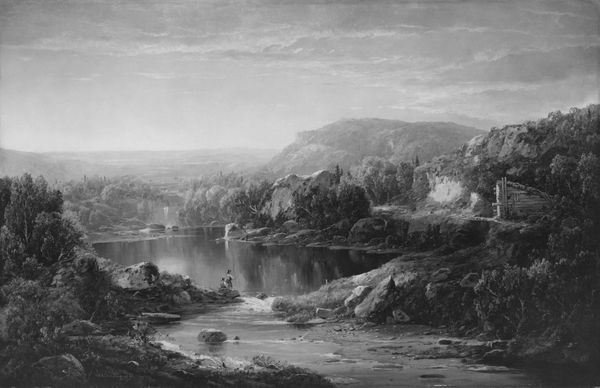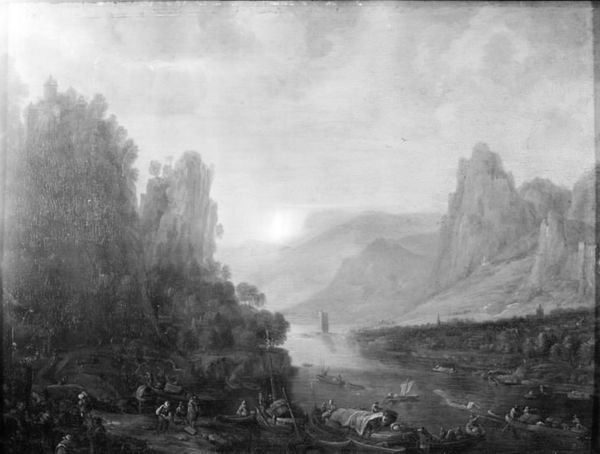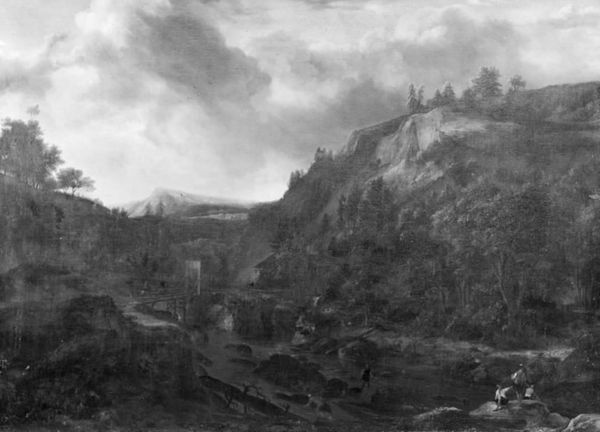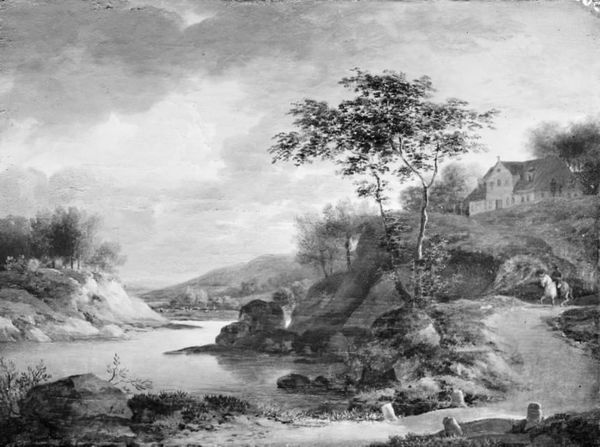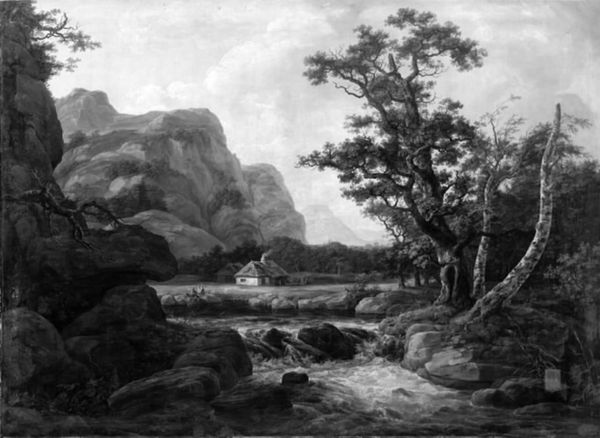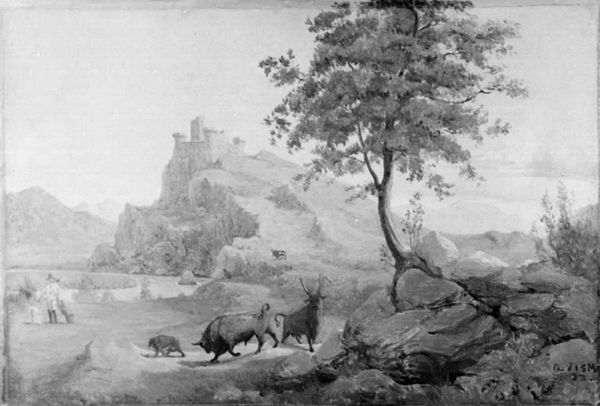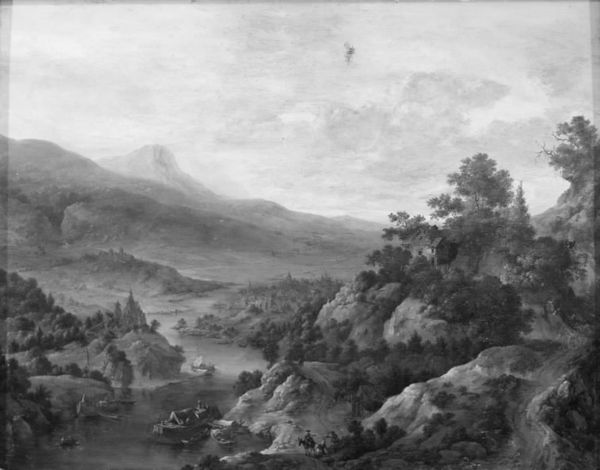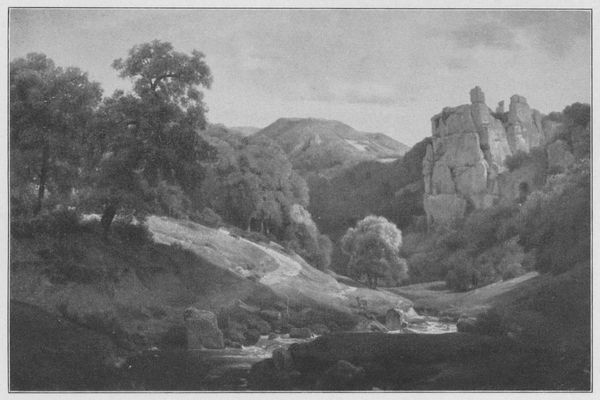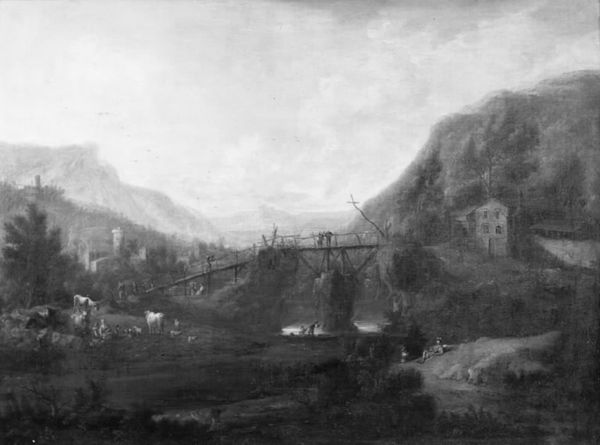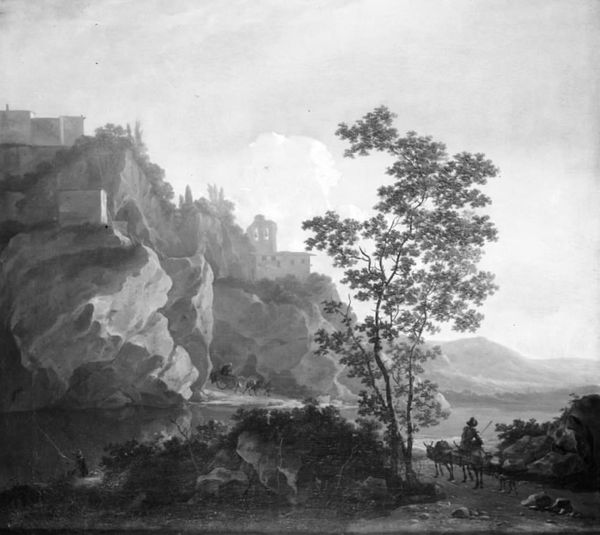
painting, oil-paint
#
painting
#
oil-paint
#
landscape
#
romanticism
#
black and white
#
monochrome photography
#
monochrome
#
monochrome
Dimensions: 21.5 cm (height) x 27.5 cm (width) (Netto)
Curator: Looking at this landscape, it evokes a sense of sublime melancholy, doesn't it? The stark monochrome adds a certain dramatic intensity to the scene. Editor: It does indeed. We are viewing "Klipper ved Götaelven" by Henrich Christian From, created sometime between 1826 and 1846. What interests me particularly is the artist’s technique and choice of medium—oil paint. Can you speak a bit more about his process and how it relates to the materiality of this artwork? Curator: Certainly. The texture is incredible. Considering this artwork comes from the Romanticism movement, notice the brushstrokes creating these rocky cliffs, capturing a raw landscape where nature’s material reality shapes power structures within communities situated here. The layering of oil gives depth but also indicates the labor and the amount of raw pigment that was available to From at the time, so it indicates his own economic and societal standing in comparison to others. Editor: And consider those ruins perched atop the cliff – they act as a powerful signifier of both human aspiration and inevitable decay. It speaks to the themes of romantic nationalism that were emerging during the period with landscapes that capture places of ruin and remembrance. How does From's personal life feed into his production of artwork with these strong references to location and memory? Curator: Unfortunately, From’s personal papers are scant. Still, thinking about access to material and production, notice how the light plays against the structures. Someone physically built that structure we are looking at atop those cliffs and the availability of such materials points to networks of power and production that must be interrogated further. I imagine people working in these conditions—what were the actual conditions that they labored under to produce these spaces? Editor: Absolutely, this ties into broader questions about identity and cultural heritage that underpin Romanticism as a movement and the impact the work has as a cultural artifact today in its location within the Statens Museum for Kunst. Thank you for providing the texture for these questions. Curator: Of course, the questions and materiality open paths to discussing labor—that is most critical. Editor: Indeed. We’ll leave our listeners with that thought.
Comments
No comments
Be the first to comment and join the conversation on the ultimate creative platform.


